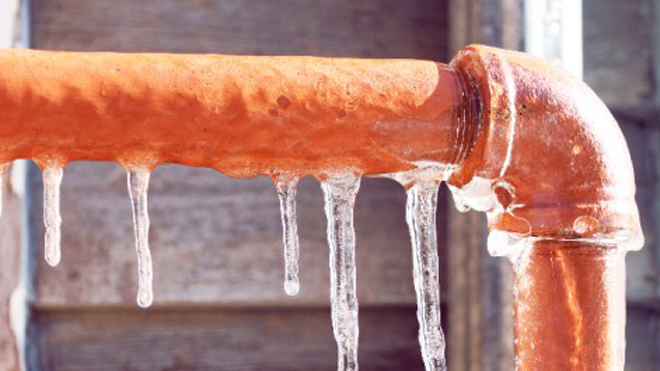Guidance for Avoiding Frozen Plumbing in Winter: Expert Advice
Guidance for Avoiding Frozen Plumbing in Winter: Expert Advice
Blog Article
What are your ideas concerning Winter Plumbing Precautions: Preventing Frozen Pipes?

Winter can ruin your pipes, especially by freezing pipelines. Here's how to stop it from occurring and what to do if it does.
Introduction
As temperatures drop, the threat of icy pipes boosts, possibly leading to pricey repair services and water damage. Comprehending how to stop frozen pipes is critical for homeowners in cold climates.
Comprehending Frozen Pipelines
What triggers pipelines to ice up?
Pipelines ice up when subjected to temperature levels below 32 ° F (0 ° C) for prolonged periods. As water inside the pipes freezes, it expands, putting pressure on the pipe wall surfaces and possibly causing them to rupture.
Threats and problems
Frozen pipes can bring about water disruptions, residential or commercial property damages, and expensive repair services. Burst pipelines can flood homes and create comprehensive structural damages.
Indicators of Frozen Pipes
Identifying frozen pipelines early can stop them from breaking.
Just how to identify frozen pipes
Look for reduced water circulation from taps, uncommon smells or noises from pipes, and noticeable frost on subjected pipelines.
Prevention Tips
Protecting vulnerable pipelines
Wrap pipelines in insulation sleeves or utilize heat tape to protect them from freezing temperatures. Focus on pipes in unheated or outside areas of the home.
Heating methods
Maintain indoor rooms appropriately heated up, particularly locations with plumbing. Open cabinet doors to permit cozy air to circulate around pipes under sinks.
Shielding Exterior Pipes
Garden pipes and outdoor faucets
Disconnect and drain pipes garden tubes prior to winter months. Install frost-proof spigots or cover exterior faucets with shielded caps.
What to Do If Your Pipelines Freeze
Immediate activities to take
If you think frozen pipes, keep taps open up to ease stress as the ice melts. Use a hairdryer or towels soaked in warm water to thaw pipes gradually.
Long-Term Solutions
Structural adjustments
Consider rerouting pipes far from exterior wall surfaces or unheated areas. Include extra insulation to attic rooms, basements, and crawl spaces.
Updating insulation
Buy top notch insulation for pipelines, attics, and walls. Appropriate insulation assists maintain consistent temperature levels and lowers the danger of icy pipelines.
Verdict
Avoiding frozen pipes requires aggressive actions and fast reactions. By comprehending the causes, signs, and safety nets, home owners can shield their pipes throughout winter.
5 Ways to Prevent Frozen Pipes
Drain Outdoor Faucets and Disconnect Hoses
First, close the shut-off valve that controls the flow of water in the pipe to your outdoor faucet. Then, head outside to disconnect and drain your hose and open the outdoor faucet to allow the water to completely drain out of the line. Turn off the faucet when done. Finally, head back to the shut-off valve and drain the remaining water inside the pipe into a bucket or container. Additionally, if you have a home irrigation system, you should consider hiring an expert to clear the system of water each year.
Insulate Pipes
One of the best and most cost-effective methods for preventing frozen water pipes is to wrap your pipes with insulation. This is especially important for areas in your home that aren’t exposed to heat, such as an attic. We suggest using foam sleeves, which can typically be found at your local hardware store.
Keep Heat Running at 65
Your pipes are located inside your walls, and the temperature there is much colder than the rest of the house. To prevent your pipes from freezing, The Insurance Information Institute suggests that you keep your home heated to at least 65 degrees, even when traveling. You may want to invest in smart devices that can keep an eye on the temperature in your home while you’re away.
Leave Water Dripping
Moving water — even a small trickle — can prevent ice from forming inside your pipes. When freezing temps are imminent, start a drip of water from all faucets that serve exposed pipes. Leaving a few faucets running will also help relieve pressure inside the pipes and help prevent a rupture if the water inside freezes.
Open Cupboard Doors
Warm your kitchen and bathroom pipes by opening cupboards and vanities. You should also leave your interior doors ajar to help warm air circulate evenly throughout your home.

As an avid reader about How to Prevent Your Pipes From Freezing, I figured sharing that post was a good thing. Enjoyed reading our write up? Please share it. Let someone else check it out. Kudos for your time. Please come visit our blog back soon.
Check This Out Report this page